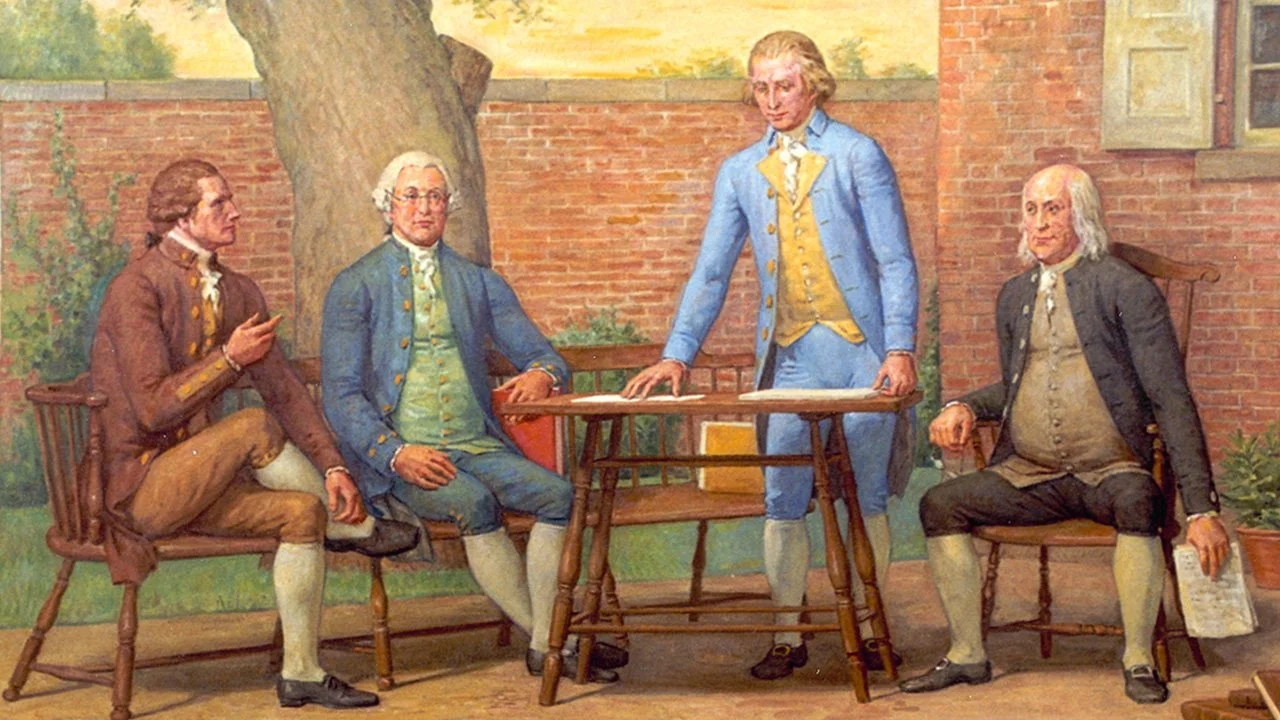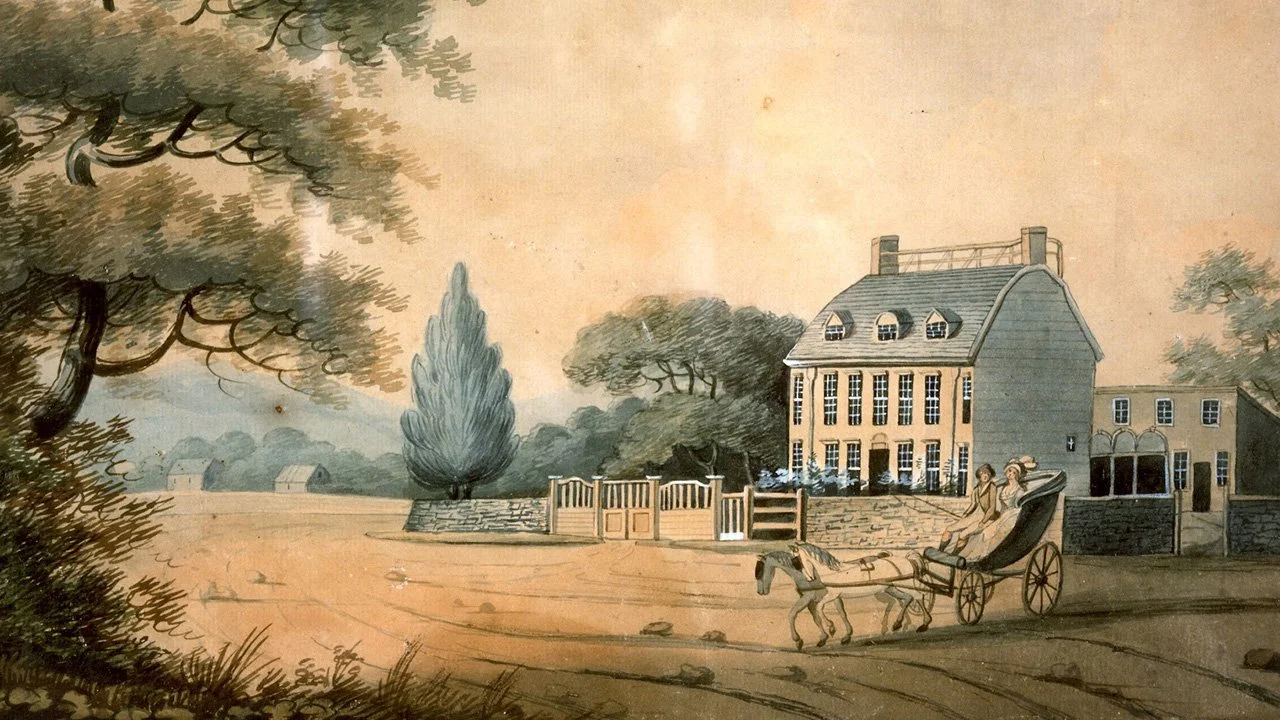The Battle of Fallen Timbers
Following St. Clair’s disaster at the Battle of the Wabash, a reluctant Congress finally agreed to President George Washington’s request to create a force capable of conquering the Northwest Territory. The result was a 5,000-man force called the Legion of the United States, the forerunner of today’s Army. Washington entrusted its command to General Anthony Wayne, a trusted officer from the American Revolution. In July 1794, following countless delays, General Wayne began his final thrust into the Shawnee’s heartland, searching for the large Indian force he knew awaited him.
St. Clair’s Debacle on the Wabash
Following General Josiah Harmar’s defeat in October 1790, Congress expanded the army and President George Washington appointed Arthur St. Clair, governor of the Northwest Territory, to command the new force. In September 1791, St. Clair began his march north from Fort Washington with 1,500 poorly trained and under equipped men. Despite several soldiers being killed and numerous horses stolen, St. Clair did not believe any large Indian force was nearby. Disregarding these warning signs, he did not post any picket lines that night nor did he have the men fortify their positions. At dawn on November 4, 1,000 warriors, led by Little Turtle and Blue Jacket, launched a surprise attack on the American camp.
Settling the Ohio Frontier
In the 1780s, American pioneers began moving into the Ohio frontier and met resistance from Indian tribes who claimed the land as their own. The clash between these two disparate cultures resulted in the Northwest Indian War, the first war ever fought by the new constitutional government. Determined to protect the pioneers and encourage settlement, President Washington tried to purchase land from the tribes rather than committing to an expensive war. In January 1789, Territorial Governor Arthur St. Clair convinced several chiefs to sign the Treaty of Fort Harmar, which essentially ceded all of Ohio to the United States. But the Shawnee, encouraged by promises of British support, refused to sign the treaty or acknowledge its legitimacy.
The Northwest Ordinance of 1787
The Northwest Ordinance was one of the United States most important founding documents, only less significant than the Declaration of Independence and the Constitution. The act, passed by the Confederation Congress on July 13, 1787, created the Northwest Territory and a framework for the country’s territorial expansions. The Northwest Territory had been part of Canada until conquered by George Rogers Clark during the American Revolution. It comprised 300,000 square miles, stretching from the Appalachians to the Mississippi and from the Great Lakes to the Ohio.
The Whiskey Rebellion
The most troublesome domestic event during George Washington’s two terms as president was the Whiskey Rebellion. The root cause of this incident was the first ever internal tax issued by the federal government. Created by Treasury Secretary Alexander Hamilton, it taxed all domestically produced distilled spirits and went into effect in March 1791. This so-called whiskey tax was very unpopular with the Scotch-Irish farmers of western Pennsylvania who felt the tax unfairly targeted westerners and that their interests were not represented in Congress.
The Treaty of San Lorenzo
The Treaty of San Lorenzo, also known as Pinckney’s Treaty, was an agreement between the United States and Spain that settled a boundary dispute and granted navigation rights on the Mississippi to Americans. Spain had lost possession of modern-day Florida to England during the French and Indian War. The Treaty of Paris in 1783 returned this area to Spanish control, however, Spain claimed the boundary of West Florida was 85 miles further north than America insisted upon. In retaliation, the Spanish closed the port of New Orleans to all American goods, which hurt western commerce. To resolve this dispute, President George Washington sent South Carolinian Thomas Pinckney to Spain to negotiate a settlement.
The Jay Treaty Cools Rising Tensions Between America and England
While the Treaty of Paris ended the American Revolution, two key provisions laid out in the agreement had not been followed by England since its signing. The British had never evacuated their forts in the Northwest Territory and, to make matters worse, they encouraged their Indian allies to terrorize any American settlers in the region. They had also continued their habit of taking British-born sailors off American merchant ships and forcing them to serve on British warships, a practice known as impressment. President Washington, worried our new nation was drifting towards a war it was ill-prepared to fight, sent John Jay, Chief Justice of the Supreme Court, to England to negotiate a settlement.
Washington Declares Neutrality
In February 1793, tensions between revolutionary France and England erupted when France declared war on England. President Washington, hoping to find a peaceful middle ground, issued his Proclamation of Neutrality on April 22, 1793, which declared America’s friendship for both nations and hostility towards neither. On a larger scale, the proclamation established the precedent that the executive branch was the prime decision maker in American foreign policy and Washington’s neutrality proclamation became a key part of it for the next century.
George Washington, Our Nation’s First President
On February 4, 1789, in accordance with the new Constitution, state electors voted for the President of the United States and George Washington was unanimously elected. There was no precedent to follow and no predecessor for President Washington to lean on. He had to create and learn the job as he went along, always conscious that what he did would impact how future Presidents would govern.
The Constitution of the United States
The opening phrase of our Constitution’s preamble, “We the People,” spoke volumes regarding upon whose authority the Constitution rested and suggested the unanimity of country and purpose that this new Constitution would create. The document is a 4,543-word masterpiece of political thought that has stood the test of time and is the longest standing written constitution in the world.
The Slavery Question at the Constitutional Convention
One of the most troublesome questions at the Constitutional Convention was what to do about slavery. Not whether it should be abolished by the new Constitution, but whether slaves would be counted in the census and if the states or the central government would control the institution and what that control would look like. All delegates recognized the terrible inconsistency between slavery and the words expressed in our Declaration of Independence. But they understood the task at hand was to create a new form of national government that could prosper under the conditions that existed. Most importantly, the fact remained that the southern states were not ready to completely let it go and, as John Rutledge from South Carolina stated, the true question was “whether the southern states shall or shall not be part of the Union.”
Key Debates at the Constitutional Convention
On May 29, 1787, Edmund Randolph from Virginia introduced fifteen resolutions to the Constitutional Convention. Known as the Virginia Resolves or the Virginia Plan, Randolph’s proposal outlined an entirely new national government, including a strong executive, a two-house legislature, and an independent judiciary. It would be the basis for discussion at the convention for the rest of the summer.
The Federal Convention Opens
Under the Articles of Confederation, Congress lacked the authority to raise an army without the approval of the states, all treaties had to be unanimously approved, and most importantly, Congress did not have the power to levy taxes. Congress decided to hold a convention of all states in Philadelphia to review how to fix these and other issues. To add credibility to the convention, the primary organizers, James Madison and Alexander Hamilton, felt it was critical for George Washington to attend. Washington reluctantly agreed to represent Virginia at the gathering, and was unanimously chosen to preside over the convention, which began on May 25, 1787 in Philadelphia.
Ben Franklin Influences Constitutional Convention
Ben Franklin returned to America in September 1785 having been away for eight years. The nation to which he returned was struggling under the Articles of Confederation, and consequently, a convention was called to address these issues. Pennsylvania named Franklin as one of their delegates. Despite being 81 years old and in poor health, Franklin willing gave his services to America.
The Great Seal of the United States
The work to create our Great Seal began on July 4, 1776, when Congress formed a committee including Benjamin Franklin, John Adams, and Thomas Jefferson to design an official seal for our new country. It took three committees and Charles Thompson, secretary of Congress, six years to come up with the final design!
The Quasi-War and Its Aftermath
In 1798, calls for war with France were rising and there was concern about a possible French invasion. The existing US Army comprised about 3,000 men, not nearly adequate to defend our borders. Congress reluctantly agreed to create a 10,000 soldier “provisional” force and President John Adams nominated George Washington to lead it. Despite being unprepared at the outset of the Quasi-War, the United States quickly responded and acquitted itself well.
Escalating Tensions with France Lead to Quasi-War
The Quasi-War was an undeclared war between France and the United States, fought in the Caribbean and along the southern coast of America, between 1798 and 1800. President John Adams, wanting to maintain our neutrality, refused to declare war but recognized the need to rebuild our navy, which had been disbanded after the American Revolution.
Relations with France Fall Apart
America’s first armed conflict after the American Revolution was a mostly forgotten fight with France called the Quasi-War and was the culmination of a series of disagreements with our former ally.
The Inspiring Legacy of John Adams
John Adams lost the Presidential election of 1800 to Thomas Jefferson after a bitter fight. Adams, a critical player in practically every major event of our nation’s formative years, retired to Quincy, Massachusetts, where he spent his time working his farm and staying out of politics.
The Presidency of John Adams
John Adams faced many difficulties during his presidency, including a vice president from an opposing party trying to undermine his administration and rising tensions with France.

























